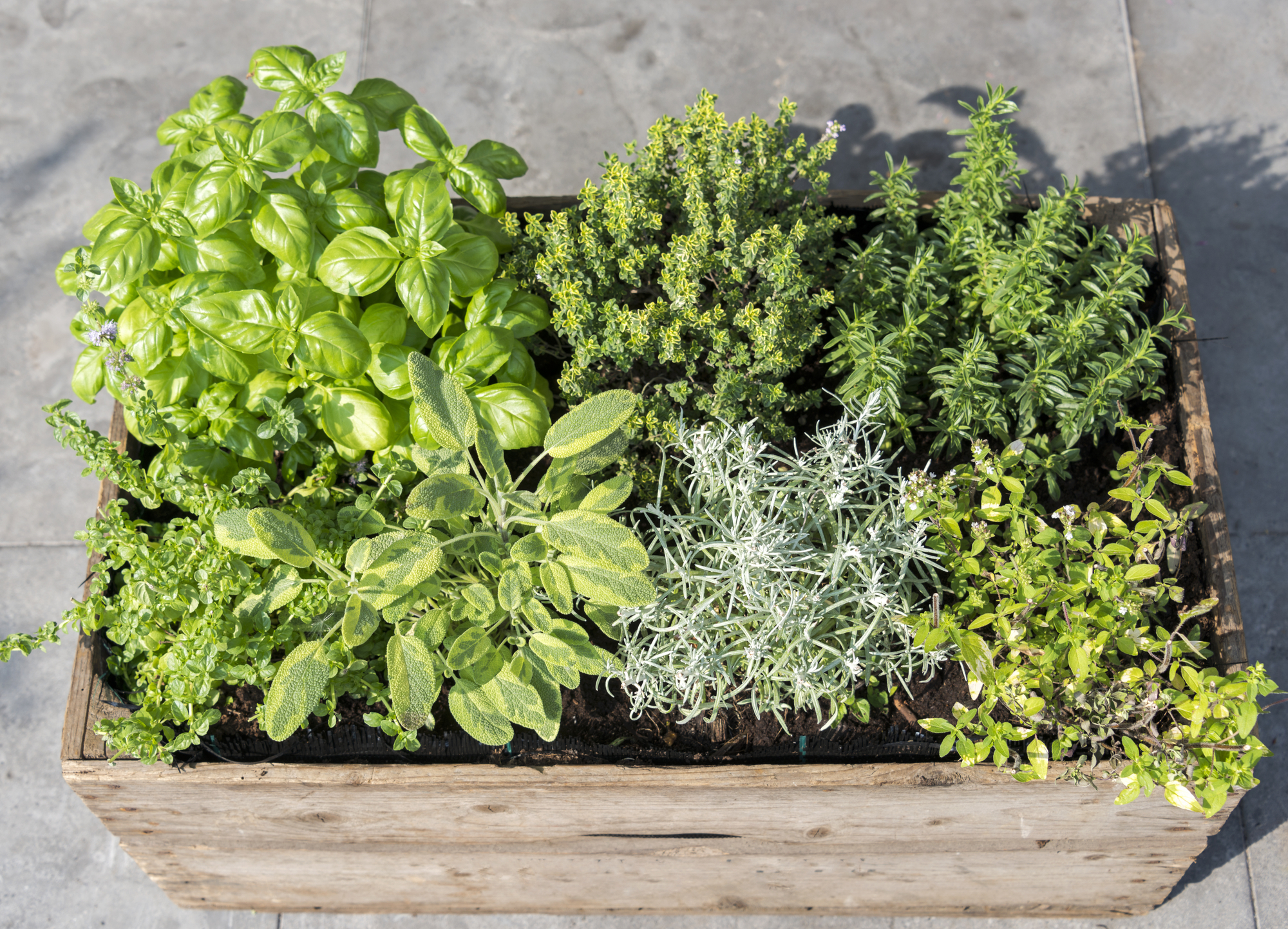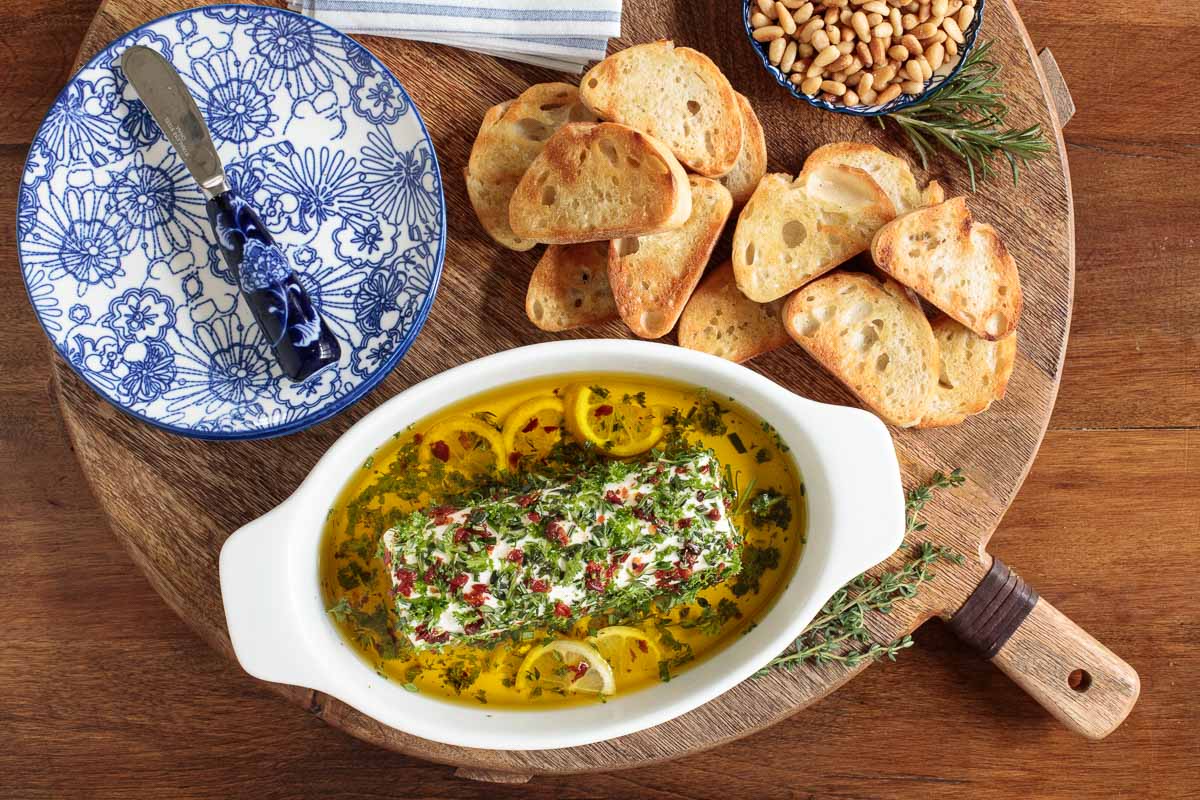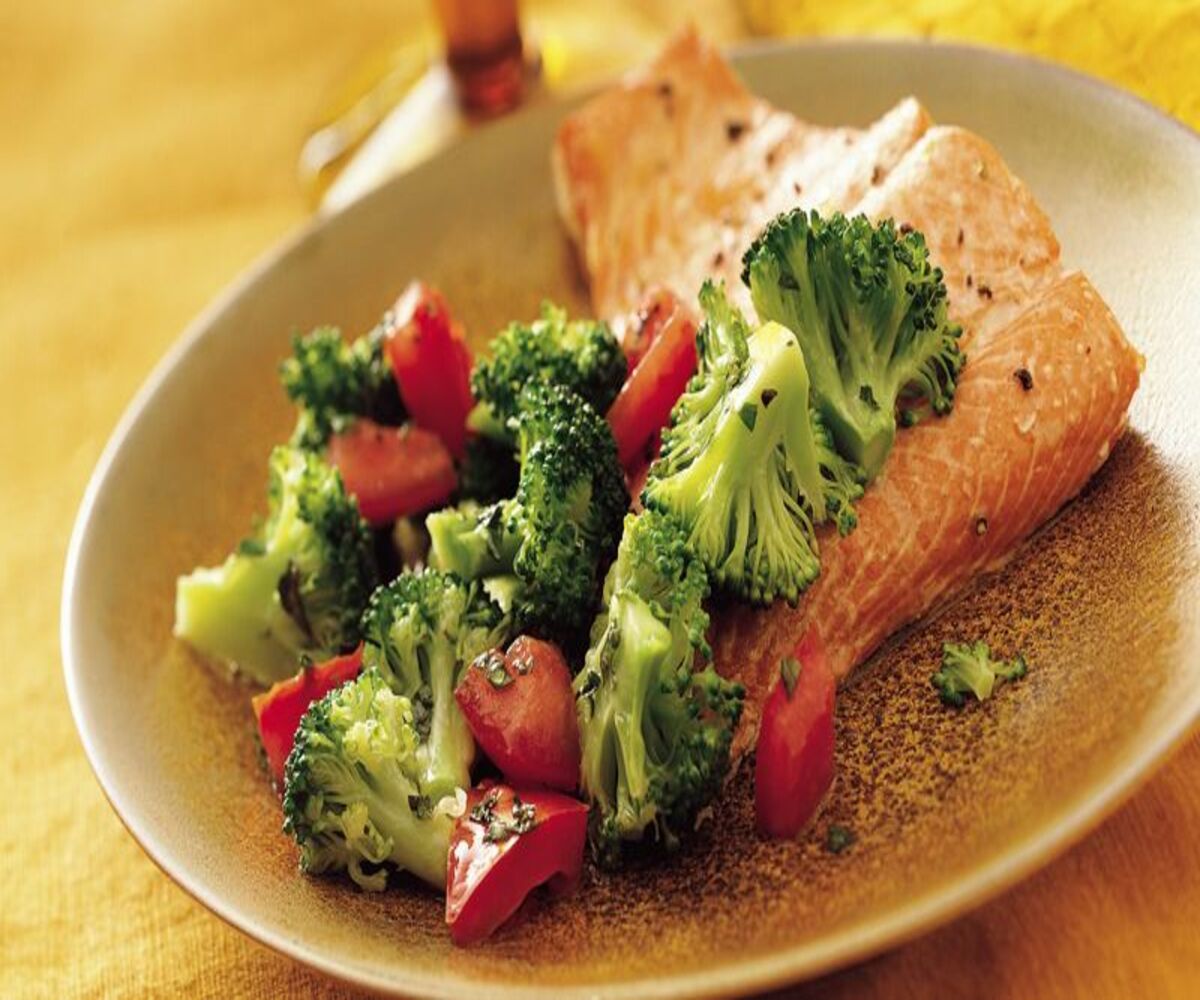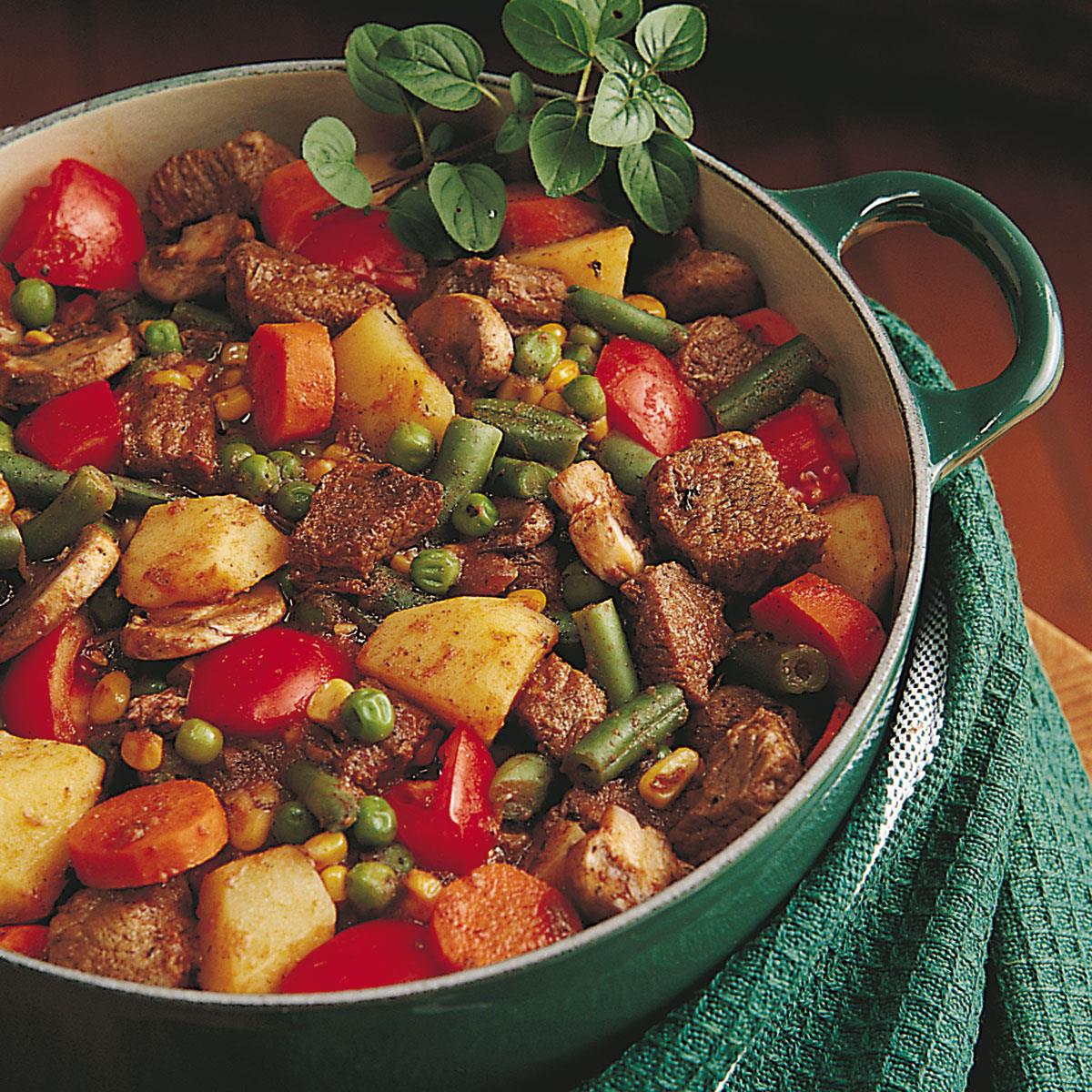Home>Gardening News and Trends>Gardening Trends>What Herbs Go Together In Cooking
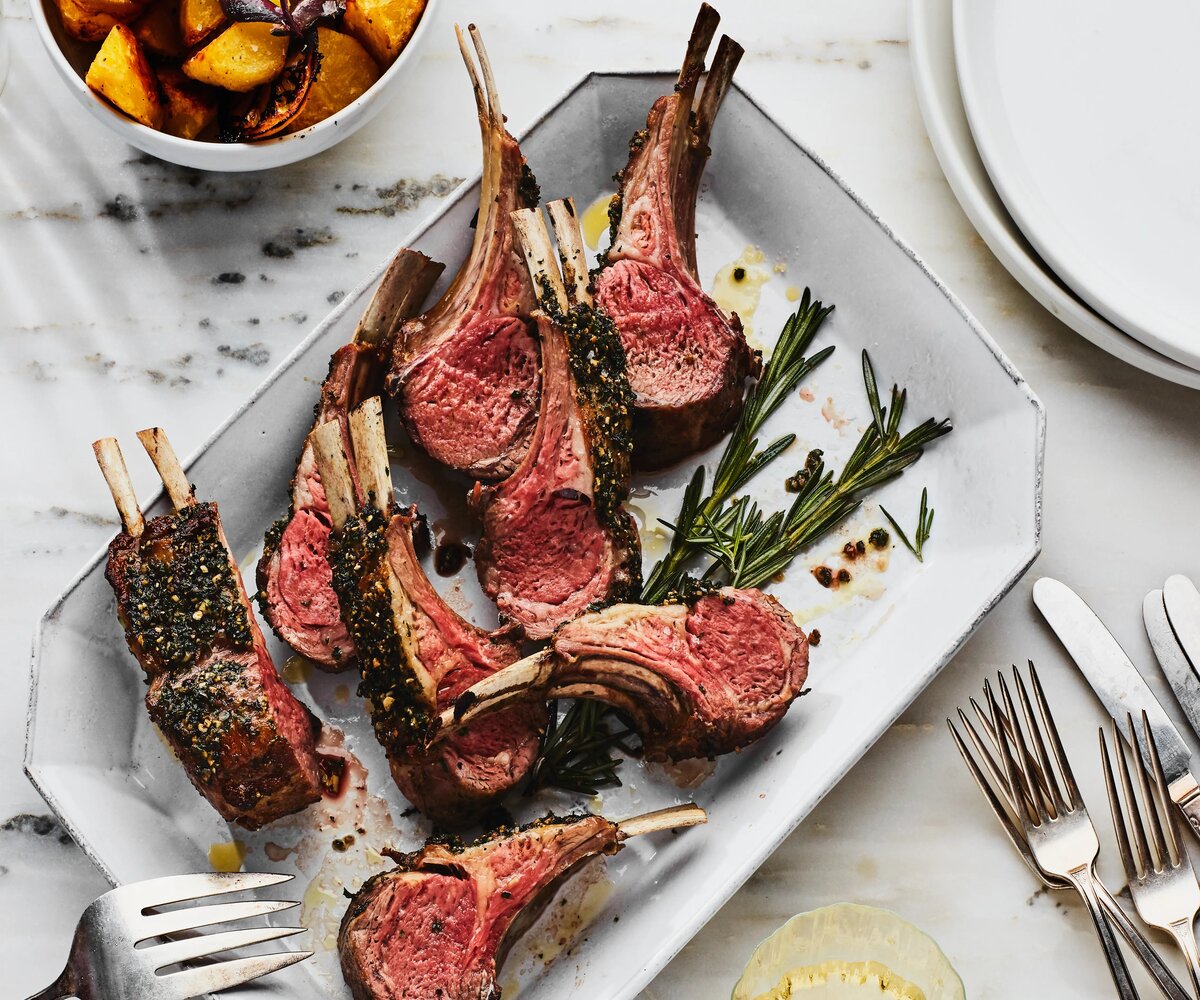

Gardening Trends
What Herbs Go Together In Cooking
Modified: January 22, 2024
Discover the latest gardening trends and learn which herbs go together in cooking. Enhance your culinary experiences with the perfect herb combinations.
(Many of the links in this article redirect to a specific reviewed product. Your purchase of these products through affiliate links helps to generate commission for Chicagolandgardening.com, at no extra cost. Learn more)
Table of Contents
- Introduction
- Understanding Herb Combinations
- Common Herbs and Their Compatible Pairings
- Basil and Tomato: A Classic Combination
- Rosemary and Garlic: A Flavorful Duo
- Thyme and Lemon: A Zesty Twist
- Parsley and Mint: A Refreshing Blend
- Sage and Onion: A Savory Match
- Dill and Cucumber: A Cool Pairing
- Oregano and Marjoram: A Mediterranean Flair
- Conclusion
Introduction
Welcome to the wonderful world of herb combinations in cooking! Whether you’re a seasoned chef or just starting out in the kitchen, understanding which herbs go together can elevate your dishes to the next level. The art of pairing herbs is all about enhancing flavors, adding depth, and creating harmonious taste profiles in your culinary creations.
Herbs have been used in cooking for centuries, not just for their flavors, but also for their health benefits and aromatic qualities. From the robust aroma of rosemary to the fresh, citrusy notes of thyme, each herb brings its own unique characteristics to the table.
By learning about the common herb combinations that work well together, you can expand your culinary repertoire and experiment with exciting flavor profiles in your dishes. Whether you’re preparing a savory sauce, marinating meat, or garnishing a salad, knowing the best herb pairings will help you achieve the perfect balance of taste and aroma.
In this article, we will explore some of the most popular herb combinations in cooking and delve into the reasons behind their successful marriages of flavors. From classic pairings like basil and tomato to unexpected combinations like dill and cucumber, you’ll discover how certain herbs complement and enhance each other in delightful ways.
So, grab your apron, sharpen your culinary skills, and let’s dive into the world of herb combinations. By the end of this article, you’ll be well-equipped to create delicious dishes infused with the perfect balance of flavors and aromas.
Understanding Herb Combinations
Before we delve into specific herb pairings, it’s important to understand the principles behind successful combinations. When it comes to herbs, it’s not just about randomly throwing a bunch of them together – there is a method to the madness.
The key to creating harmonious herb combinations lies in understanding flavor profiles and complementary characteristics. Some herbs have similar flavor profiles and work well together, while others create a contrasting yet complementary effect.
One important consideration is the intensity of the herbs’ flavors. Some herbs have a delicate flavor that can be easily overpowered, while others have a robust and distinct taste. Pairing herbs with similar intensities ensures that one herb doesn’t overpower the other.
Another factor to consider is the compatibility of the herbs’ aromas. Aromatic herbs can have dominant scents, and blending herbs with complementary aromas can create a delightful sensory experience. The aromas of certain herbs can even enhance the flavors of the dish.
Lastly, texture plays a role in herb combinations. Some herbs have a soft, delicate texture, while others have a more robust and crunchy texture. Combining herbs with contrasting textures can add an interesting dimension to your dishes.
By understanding these principles, you can create well-balanced and flavorful combinations that elevate your culinary creations to new heights.
Now that we have a foundation for understanding herb combinations, let’s explore some popular pairings and discover the magic they bring to our cooking.
Common Herbs and Their Compatible Pairings
When it comes to herb combinations, certain pairings have stood the test of time and become classics in the culinary world. These combinations not only enhance the flavors of the ingredients they’re paired with but also create a pleasing harmony that satisfies the palate.
Let’s explore some of the most popular and versatile herb combinations:
- Basil and Tomato: This combination is a match made in culinary heaven. The sweet and slightly peppery flavor of basil complements the acidity of tomatoes, creating a delightful balance in pasta sauces, salads, and Caprese dishes.
- Rosemary and Garlic: The earthy and fragrant aroma of rosemary pairs perfectly with the pungent and spicy notes of garlic. This combination works wonders in roast meats, potatoes, and even bread, infusing them with a robust and savory flavor.
- Thyme and Lemon: The bright and citrusy flavor of lemon pairs beautifully with the earthy and slightly minty notes of thyme. This combination adds a zesty twist to roasted vegetables, seafood dishes, and poultry.
- Parsley and Mint: The fresh and vibrant flavors of parsley and mint make them a refreshing duo. This combination is perfect for adding a burst of flavor to salads, tabbouleh, and Mediterranean dishes.
- Sage and Onion: Sage’s warm and slightly bitter flavor complements the sweet and pungent notes of onion. This combination is a classic in stuffing and adds depth to roasted meats and winter soups.
- Dill and Cucumber: The delicate and aromatic flavors of dill perfectly enhance the crisp and refreshing taste of cucumber. This combination is often used in salads, pickles, and creamy sauces.
- Oregano and Marjoram: These Mediterranean herbs share similar flavor profiles, with oregano being slightly stronger and marjoram having a sweeter and more delicate taste. Together, they create a harmonious blend that adds depth to Italian dishes, grilled meats, and tomato-based sauces.
These are just a few examples of herb combinations that can elevate your cooking to new heights. Don’t be afraid to experiment and discover your own unique pairings based on personal preferences and culinary adventures.
Now that we have explored some common herb pairings, let’s take a closer look at a few of them and explore the reasons behind their successful marriages of flavors.
Basil and Tomato: A Classic Combination
When it comes to herb combinations, few are as iconic and beloved as basil and tomato. This classic pairing has been a staple in Italian cuisine for centuries, and for good reason. The marriage of these two ingredients creates a symphony of flavors that is hard to resist.
Basil, with its sweet, slightly peppery taste and its distinct aroma, pairs beautifully with the bright acidity of tomatoes. The earthy and herbal notes of basil enhance the natural sweetness of ripe tomatoes, creating a perfect balance of flavors.
One of the most famous dishes that showcases the basil and tomato combination is the Caprese salad. Its simplicity is its brilliance – ripe tomatoes, fresh basil leaves, mozzarella cheese, and a drizzle of olive oil. Each bite is a burst of freshness and harmony.
Not only does basil complement the flavors of tomatoes, but it also adds a pop of vibrant green color to any dish. Whether it’s sprinkled on top of a Margherita pizza, tossed in a pasta sauce, or blended into a pesto, basil brings a touch of freshness and a visual appeal to any dish.
Another reason why basil and tomato work so well together is their complementary aromatic qualities. The fragrant and slightly spicy aroma of basil pairs beautifully with the sweet and tangy scent of tomatoes. This aroma combination not only enhances the taste experience but also adds an inviting element to the dish.
The versatility of this combination cannot be overstated. From classic Italian dishes like bruschetta and spaghetti alla puttanesca to modern interpretations like tomato and basil sorbet, the possibilities are endless. Basil and tomato truly bring out the best in each other, creating a symphony of flavors that excites the palate.
So, the next time you have some ripe tomatoes on hand, don’t forget to grab a handful of fresh basil leaves. Whether you’re making a simple tomato and basil salad or incorporating them into a more complex recipe, this classic combination is sure to impress and delight your taste buds.
Rosemary and Garlic: A Flavorful Duo
When it comes to creating bold and robust flavors in your dishes, the combination of rosemary and garlic is a winning pair. These two ingredients have been used together for centuries, and their collective impact on the palate is simply divine.
Rosemary is an herb with an intense and distinctive aroma, characterized by its woody and pine-like scent. Its flavor is equally strong, with a slightly minty and earthy taste that adds depth and complexity to dishes. Garlic, on the other hand, is known for its pungent and spicy notes, delivering a punch of flavor to any recipe it is added to.
When rosemary and garlic come together, they create a flavor powerhouse that can transform simple dishes into culinary delights. This combination is particularly popular in Mediterranean and Italian cuisines, where it is used in marinades for grilled meats, roasted vegetables, and stews.
The compatibility of rosemary and garlic lies in their complementary qualities. The earthiness of rosemary pairs perfectly with the spiciness of garlic, creating a harmonious balance of flavors. The aromatic qualities of both ingredients also work in unison, releasing a captivating scent that fills the kitchen and entices the senses.
One of the most popular ways to showcase the rosemary and garlic duo is in roasted dishes. Whether it’s a succulent roast chicken, a rack of lamb, or roasted potatoes, infusing these ingredients into the dish brings out the best in both flavors. The robustness of the rosemary and garlic combination adds a savory, aromatic touch that elevates the overall taste experience.
Furthermore, rosemary and garlic can also be used in herb-infused oils or butter, which can be drizzled over vegetables, used as a marinade, or spread on bread. The flavors penetrate through the oil or butter, resulting in a delectable infusion that imparts the essence of rosemary and garlic to any dish.
Whether you’re cooking a hearty meal for a special occasion or simply looking to add a burst of flavor to your weekday dinner, don’t underestimate the power of rosemary and garlic. Their combination will undoubtedly leave a lasting impression on your taste buds.
Thyme and Lemon: A Zesty Twist
When it comes to adding a zesty twist to your dishes, the combination of thyme and lemon is a match made in culinary heaven. The herbaceous and slightly floral flavor of thyme pairs beautifully with the bright and citrusy notes of lemon, creating a delightful and refreshing taste experience.
Thyme is an herb known for its earthy and minty taste. Its versatility in cooking makes it a popular choice for a wide range of dishes. Lemon, on the other hand, adds a burst of tanginess and acidity that helps to brighten and balance flavors.
Thyme and lemon bring out the best in each other, enhancing the overall taste profile of a dish. This combination works wonders in a variety of recipes, from roasted chicken to grilled fish, and even salads and dressings.
The aromatic qualities of thyme and lemon further elevate their pairing. The herbaceous aroma of thyme blends harmoniously with the zesty and citrusy fragrance of lemon, creating a delightful scent that adds an extra dimension to your culinary creations.
One classic way to showcase the thyme and lemon combination is in roasted or grilled dishes. Whether you’re cooking a whole chicken or a piece of fish, adding a sprinkle of fresh thyme and a squeeze of lemon juice can enhance the overall flavor profile and provide a balanced and refreshing taste.
Thyme and lemon are also commonly used in dressings and marinades. By combining fresh thyme leaves, lemon zest, lemon juice, and olive oil, you can create a vibrant and zesty blend that can be tossed over salads, used as a marinade for meats, or drizzled over roasted vegetables.
Not only do thyme and lemon work well in savory dishes, but they can also be incorporated into sweet recipes. Lemon-thyme shortbread cookies or a thyme-infused lemon sorbet are just a couple of examples of how this combination can bring a unique and delightful twist to desserts.
So, the next time you want to add a zesty and herbaceous twist to your dishes, reach for thyme and lemon. Their combination will infuse your meals with bright and refreshing flavors that are sure to impress.
Parsley and Mint: A Refreshing Blend
When it comes to creating dishes with a refreshing and vibrant twist, the combination of parsley and mint is a winning duo. These herbs bring a burst of freshness to any recipe and their complementary flavors can transform simple dishes into culinary delights.
Parsley is a versatile herb known for its bright and slightly peppery flavor. It adds a vibrant green color and a fresh, clean taste to dishes. Mint, on the other hand, brings a cool, refreshing flavor with a hint of sweetness, making it a perfect complement to parsley.
Combining parsley and mint brings a refreshing and herbaceous quality to a wide range of dishes. They work exceptionally well together in salads, where their flavors mingle harmoniously. Whether tossed together in a simple side salad or incorporated into a grain-based salad, the parsley-mint combination adds a pop of flavor and a delightful contrast.
One of the classic dishes that showcases the parsley and mint blend is tabbouleh, a Middle Eastern salad. The combination of bulgur wheat, finely chopped parsley, mint, tomatoes, and citrus creates a refreshing and aromatic experience. The parsley and mint provide a refreshing and vibrant base, while the citrus adds a zingy twist.
Parsley and mint are also commonly used in sauces and spreads. A classic example is salsa verde, a versatile herb sauce that pairs well with grilled meats, roasted vegetables, and even pasta. The parsley and mint work together to create a flavorful and bright sauce that enhances the overall taste of the dish.
Furthermore, parsley and mint can also be infused into beverages. Mint-infused water or parsley-pineapple smoothies are refreshing options that highlight the herbal qualities of this combination.
Together, parsley and mint bring a dynamic freshness to recipes, invigorating the taste buds and providing a balance of herbal and cool flavors. Their complementary qualities create a harmonious blend that can elevate any dish.
So, whether you’re looking to add a refreshing twist to your salads, sauces, or even beverages, don’t forget to incorporate the delightful combination of parsley and mint. Your culinary creations will be infused with a vibrant burst of flavor and a touch of herbaceous goodness.
Sage and Onion: A Savory Match
When it comes to creating savory and flavorful dishes, the combination of sage and onion is a match made in culinary heaven. These two ingredients work in perfect harmony, bringing a robust and aromatic quality to a variety of recipes.
Sage is an herb known for its warm, earthy, and slightly bitter flavor. It has been a staple in Mediterranean and Italian cuisines for centuries. Onion, on the other hand, provides a sweet and pungent taste that adds depth and complexity to dishes.
The combination of sage and onion is commonly used in stuffing, where their flavors complement each other beautifully. The slightly bitter notes of sage help to balance the sweetness of the onion, creating a savory and well-rounded taste. Whether used in stuffing for poultry, mushrooms, or as a filling for sandwiches, the sage and onion combination adds a depth of flavor that is hard to resist.
One classic dish that showcases the sage and onion duo is roasted vegetables. When tossed with olive oil, chopped sage, and caramelized onions, vegetables like butternut squash, carrots, or Brussels sprouts become incredibly flavorful. The sage and onion infuse the vegetables with a savory and aromatic essence that enhances their natural sweetness.
Sage and onion are also commonly used in meat dishes. The combination works well in marinades or rubs for roasted or grilled chicken, pork, or beef. The flavors of sage and onion penetrate the meat, imparting a delicious and savory taste.
Furthermore, this savory match can also be used in creamy sauces and soups. A classic example is the Italian dish “gnocchi with butter and sage.” The buttery sauce infused with sage and sautéed onions adds a richness and depth to the fluffy potato dumplings.
The distinctive aroma of sage, along with the pungency of onion, further enhances the savory qualities of this combination. The aroma is released as the sage and onion are cooked, filling the kitchen with an inviting fragrance that is sure to awaken the appetite.
So, whether you’re cooking a comforting roast, creating a flavorful stuffing, or adding a savory touch to a sauce, don’t miss the opportunity to incorporate the delightful combination of sage and onion. Their union promises a symphony of flavors that will leave your taste buds craving for more.
Dill and Cucumber: A Cool Pairing
When it comes to creating cool and refreshing dishes, the combination of dill and cucumber is a match made in culinary heaven. These two ingredients bring a burst of freshness and a delightful aroma to any recipe, making them a perfect pair.
Dill is an herb known for its delicate and aromatic flavor, reminiscent of anise and parsley. It adds a subtle hint of freshness and a hint of sweetness to dishes. Cucumber, on the other hand, offers a crisp and cool texture with a subtle, refreshing taste.
The combination of dill and cucumber is frequently seen in salads, where their flavors and textures complement each other perfectly. Cucumber’s mild taste acts as a refreshing canvas for the vibrant and herbaceous notes of dill. Whether it’s a classic cucumber and dill salad, tzatziki sauce, or a creamy cucumber-dill dressing, this pairing provides a cool and refreshing experience.
In addition to salads, dill and cucumber are often used together in cold soups, such as the traditional Russian dish, “okroshka.” This chilled soup combines diced cucumbers, boiled potatoes, fresh dill, and a tangy kefir or buttermilk base. The dill brings out the crispness of the cucumber, creating a refreshing and satisfying summer soup.
Furthermore, dill and cucumber also make a perfect match in pickling. The herbaceous qualities of dill complement the natural freshness of cucumbers, resulting in a delightful blend of flavors. Whether you’re making dill pickles or pickled cucumbers for sandwiches, this combination adds a unique tang and crunch.
Not only do dill and cucumber create a cool and refreshing taste experience, but they also offer a visual appeal. Chopped dill sprinkled over sliced cucumbers adds a vibrant burst of green, making any dish visually enticing.
Lastly, the aroma of dill further enhances the sensory experience of this pairing. The subtle fragrance of dill combined with the refreshing scent of cucumber creates an inviting aroma that is hard to resist.
So, whether you’re adding them to salads, soups, pickles, or even chilled beverages, don’t forget to incorporate the cool and refreshing combination of dill and cucumber. Their pairing promises a delightful culinary experience that will leave you feeling refreshed and revitalized.
Oregano and Marjoram: A Mediterranean Flair
When it comes to infusing dishes with a distinct Mediterranean flavor, the combination of oregano and marjoram is a winning duo. These herbs, with their similar yet unique flavors, bring a touch of the Mediterranean to any recipe.
Oregano is a well-known herb in Mediterranean cuisine, with a slightly bitter and pungent taste that adds depth and warmth to dishes. Marjoram, on the other hand, has a more delicate and sweet flavor with hints of citrus and pine. While these herbs have their own distinct characteristics, they share similarities that make them a compatible pairing.
The combination of oregano and marjoram brings a sense of authenticity to Mediterranean-inspired dishes. Whether you’re making a classic tomato sauce for pasta, a Greek salad, or a grilled lamb dish, these herbs add a depth of flavor that transports you to the shores of the Mediterranean.
One iconic dish that showcases the oregano and marjoram blend is the Greek favorite, moussaka. The layering of eggplant, ground meat, and béchamel sauce is infused with the aromatic flavors of oregano and marjoram. These herbs not only enhance the taste of the dish but also lend a distinct Mediterranean flair.
Moreover, oregano and marjoram are commonly used in meat marinades. The warm and herbaceous qualities of oregano, coupled with the subtle sweetness of marjoram, complement a variety of meats. Whether it’s grilled chicken, lamb skewers, or roasted pork, the oregano and marjoram combination adds a rich and savory Mediterranean touch.
These herbs are also excellent additions to vegetable-based dishes. Whether you’re roasting a medley of vegetables, sautéing greens, or adding them to a ratatouille, the oregano and marjoram pairing enhances the flavors and gives them a distinct Mediterranean character.
It’s worth noting that oregano and marjoram are often used interchangeably in recipes, as they are from the same botanical family. However, marjoram provides a more delicate and subtle flavor compared to its bolder counterpart, oregano.
So, whether you’re craving the flavors of the Mediterranean or simply want to add a touch of warmth and depth to your dishes, don’t forget to incorporate the delightful combination of oregano and marjoram. Their blend promises to transport your taste buds to the sun-drenched shores of the Mediterranean with each bite.
Conclusion
Exploring the world of herb combinations in cooking has opened up a realm of flavors and possibilities. From classic pairings like basil and tomato to refreshing combinations like dill and cucumber, herbs have the power to elevate any dish to new heights.
Understanding the principles behind successful herb combinations, such as flavor profiles, intensity, aroma, and texture, allows us to create harmonious and well-balanced flavors in our culinary creations. By pairing herbs that complement and enhance each other’s qualities, we can create a symphony of tastes that excite the palate.
Throughout this article, we have explored some of the most popular and versatile herb combinations. Whether it’s the classic combination of basil and tomato, the robust duo of rosemary and garlic, the zesty twist of thyme and lemon, the refreshing blend of parsley and mint, the savory match of sage and onion, or the cool pair of dill and cucumber, each pairing brings its own unique flair to the table.
The culinary possibilities with herb combinations are truly endless. These combinations can be used in a variety of dishes, from salads and sauces to soups and marinades. Whether you’re cooking a simple weekday dinner or preparing a special feast, incorporating the right herb pairing can take your dishes from ordinary to extraordinary.
So, don’t be afraid to experiment and discover your own unique herb combinations based on your personal preferences and culinary adventures. Let the flavors and aromas of herbs guide you in creating delightful and memorable culinary experiences for yourself and your loved ones.
Embrace the world of herb combinations, and let your creativity and taste buds be your guide as you continue to explore the exciting and diverse flavors they have to offer. Happy cooking!
